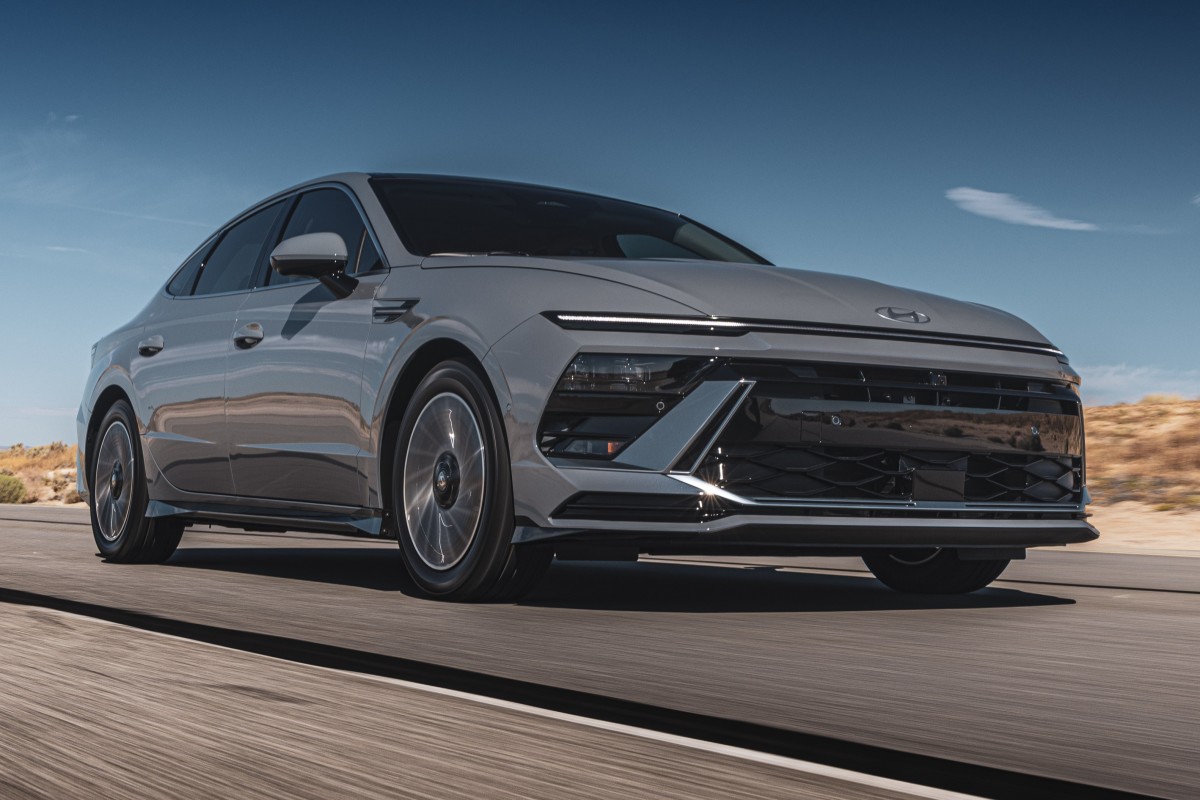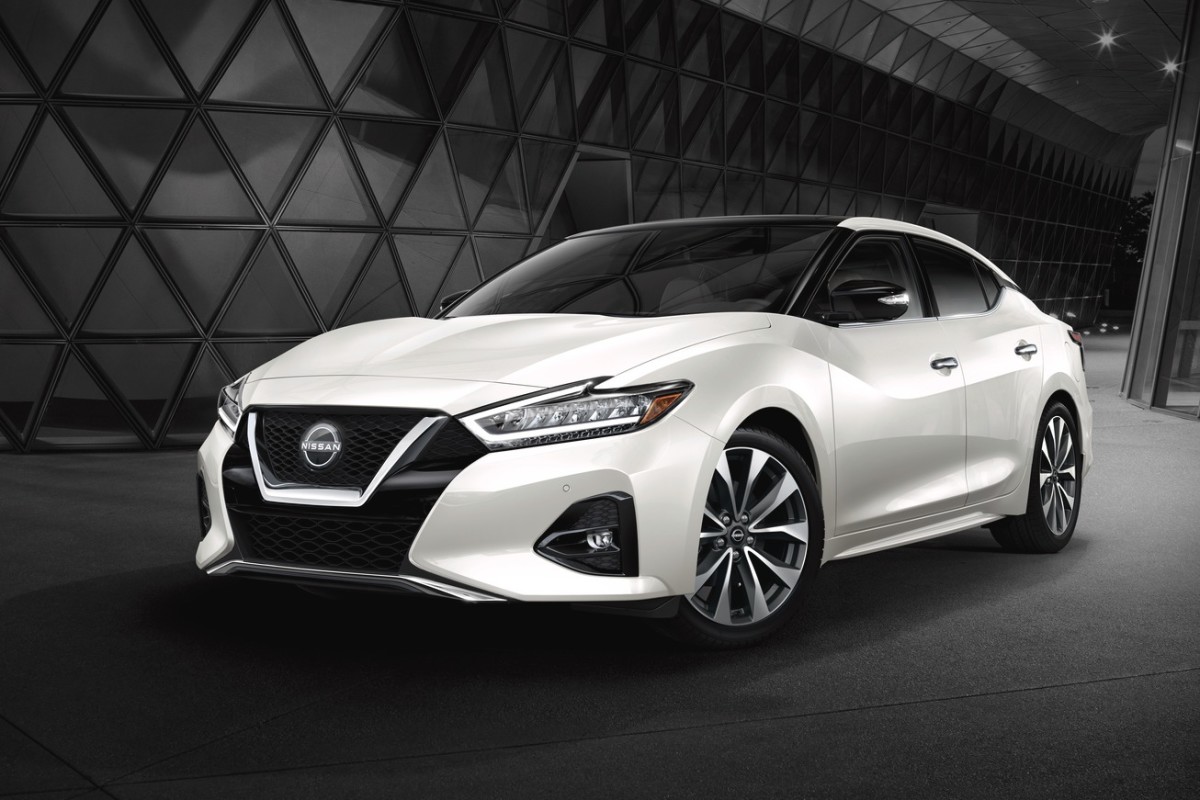Hyundai Sonata vs Nissan Maxima
Overview | |
Years produced1989-Present | Years produced1980-2014 |
MSRP$26,900 | MSRP$37,090 |
Listings9483 | Listings2750 |
Ratings & Reviews | |
User Reviews | User Reviews |
Expert reviews9.0 out of 10 | Expert reviews7.3 out of 10 |
Pros
Cons
| Pros
Cons
|
Reviews SummaryWhile its standout features are its value and safety ratings, in N Line trim the Sonata also offers some emotional appeal. Affordable sports sedans are increasingly rare, and aside from the Kia K5 GT and Subaru Legacy Sport, there’s little else in the 2025 Sonata N Line’s segment that gives you this much horsepower for this kind of price. Of course, there is a penalty to pay at the gas pump, but otherwise the N Line delivers. In general, new rear-seat air conditioning vents and improved crash-test ratings boost the 2025 Sonata’s appeal and while gas models aren’t very fuel-efficient, the Hyundai Sonata Hybrid fares better in this respect. Verdict: Hyundai refreshed the Sonata in 2024 and improved its safety rating in 2025, keeping it competitive against midsize sedan rivals. All versions offer compelling value and are impressively safe, while the N Line model is pleasantly sporty. | |
Reviews SummaryThe 2021 Nissan Maxima celebrates 40 years on sale, making it one of the oldest Japanese automotive nameplates in continuous use. While it’s impressive for any model to survive four decades, the Maxima has spent most of its history mired in mediocrity. The Nissan Maxima name first appeared in 1981 as a rebranding of the Datsun 810 sedan. The original Maxima/810 was a true enthusiast’s car, boasting rear-wheel drive (RWD) and a sporty character that led Nissan to declare it a “four-door sports car.” However, that only lasted for a few years. With its first redesign for the 1985 model year, the Maxima switched to front-wheel drive (FWD) and was positioned as Nissan’s flagship sedan. It’s been that way ever since. Nissan has continued to gesture in the direction of that original RWD model, but for most of its 40 years, the Maxima has been a slightly sportier alternative to full-size sedans like the Toyota Avalon, rather than a BMW beater. So it is with the current, eighth-generation, Maxima, which debuted for the 2016 model year. It enters the 2021 model year with few changes, the most significant being a 40th Anniversary Edition option package for the top Platinum trim level, which sits above the base SV and mid-range SR trim levels. That’s what we test drove for this review. | |
No video found | No video found |
Popular Features & Specs | |
Engine | Engine3.5L 300 hp V6 |
Drive Train | Drive TrainFWD |
Seating Capacity5 | Seating Capacity5 |
Horsepower | Horsepower300 hp @ 6400 rpm |
MPG City | MPG City20 |
MPG Highway | MPG Highway30 |
Engine | |
Engine Name2.5L 191 hp I4 | Engine Name3.5L 300 hp V6 |
Torque181 lb-ft @ 4000 rpm | Torque261 lb-ft @ 4400 rpm |
Horsepower191 hp @ 6100 rpm | Horsepower300 hp @ 6400 rpm |
DrivetrainFWD | DrivetrainFWD |
Fuel Economy | |
MPG City | MPG City20 |
MPG Highway | MPG Highway30 |
Interior | |
Seating Capacity5 | Seating Capacity5 |
Key Features | |
Navigation SystemStandard | Navigation SystemStandard |
Safety | |
Front Crash Overall4 | Front Crash Overall5 |
Side Crash Overall5 | Side Crash Overall5 |
Dimensions & Capacity | |
Cargo Space16.0 cu ft | Cargo Space14.3 cu ft |
Curb Weight3232 lbs | Curb Weight3612 lbs |
Height56.9 in | Height56.5 in |
Length193.3 in | Length192.8 in |
Width73.2 in | Width73.2 in |
Wheelbase111.8 in | Wheelbase109.3 in |
Maximum Payload1162 lbs | Maximum Payload1073 lbs |
Number of doors4 | Number of doors4 |
Overview | ||
Years produced | 1989-Present | 1980-2014 |
MSRP | $26,900 | $37,090 |
Listings | ||
Ratings & Reviews | ||
User reviews | ||
Expert reviews | 9.0 out of 10Read full review | 7.3 out of 10Read full review |
Pros & cons | Pros
Cons
| Pros
Cons
|
Summary | While its standout features are its value and safety ratings, in N Line trim the Sonata also offers some emotional appeal. Affordable sports sedans are increasingly rare, and aside from the Kia K5 GT and Subaru Legacy Sport, there’s little else in the 2025 Sonata N Line’s segment that gives you this much horsepower for this kind of price. Of course, there is a penalty to pay at the gas pump, but otherwise the N Line delivers. In general, new rear-seat air conditioning vents and improved crash-test ratings boost the 2025 Sonata’s appeal and while gas models aren’t very fuel-efficient, the Hyundai Sonata Hybrid fares better in this respect. Verdict: Hyundai refreshed the Sonata in 2024 and improved its safety rating in 2025, keeping it competitive against midsize sedan rivals. All versions offer compelling value and are impressively safe, while the N Line model is pleasantly sporty. | The 2021 Nissan Maxima celebrates 40 years on sale, making it one of the oldest Japanese automotive nameplates in continuous use. While it’s impressive for any model to survive four decades, the Maxima has spent most of its history mired in mediocrity. The Nissan Maxima name first appeared in 1981 as a rebranding of the Datsun 810 sedan. The original Maxima/810 was a true enthusiast’s car, boasting rear-wheel drive (RWD) and a sporty character that led Nissan to declare it a “four-door sports car.” However, that only lasted for a few years. With its first redesign for the 1985 model year, the Maxima switched to front-wheel drive (FWD) and was positioned as Nissan’s flagship sedan. It’s been that way ever since. Nissan has continued to gesture in the direction of that original RWD model, but for most of its 40 years, the Maxima has been a slightly sportier alternative to full-size sedans like the Toyota Avalon, rather than a BMW beater. So it is with the current, eighth-generation, Maxima, which debuted for the 2016 model year. It enters the 2021 model year with few changes, the most significant being a 40th Anniversary Edition option package for the top Platinum trim level, which sits above the base SV and mid-range SR trim levels. That’s what we test drove for this review. |
Video | No video found | No video found |
Popular Features & Specs | ||
Engine | 3.5L 300 hp V6 | |
Drive Train | FWD | |
Seating Capacity | 5 | 5 |
Horsepower | 300 hp @ 6400 rpm | |
MPG City | 20 | |
MPG Highway | 30 | |
Engine | ||
Engine Name | 2.5L 191 hp I4 | 3.5L 300 hp V6 |
Torque | 181 lb-ft @ 4000 rpm | 261 lb-ft @ 4400 rpm |
Horsepower | 191 hp @ 6100 rpm | 300 hp @ 6400 rpm |
Drivetrain | FWD | FWD |
Fuel Economy | ||
MPG City | 20 | |
MPG Highway | 30 | |
Interior | ||
Seating Capacity | 5 | 5 |
Key Features | ||
Navigation System | Standard | Standard |
Safety | ||
Front Crash Overall | 4 | 5 |
Side Crash Overall | 5 | 5 |
Dimensions & Capacity | ||
Cargo Space | 16.0 cu ft | 14.3 cu ft |
Curb Weight | 3232 lbs | 3612 lbs |
Height | 56.9 in | 56.5 in |
Length | 193.3 in | 192.8 in |
Width | 73.2 in | 73.2 in |
Wheelbase | 111.8 in | 109.3 in |
Maximum Payload | 1162 lbs | 1073 lbs |
Number of doors | 4 | 4 |

By: CarGurus + AI
At CarGurus, our team of experienced automotive writers remain at the heart of our content operation, conducting hands-on car tests and writing insightful guides that are backed by years of industry experience. To complement this, we are harnessing AI to make our content offering more diverse and more helpful to shoppers than ever. To achieve this, our AI systems are based exclusively on CarGurus content, ratings and data, so that what we produce is both unique to CarGurus, and uniquely helpful to car shoppers.







































